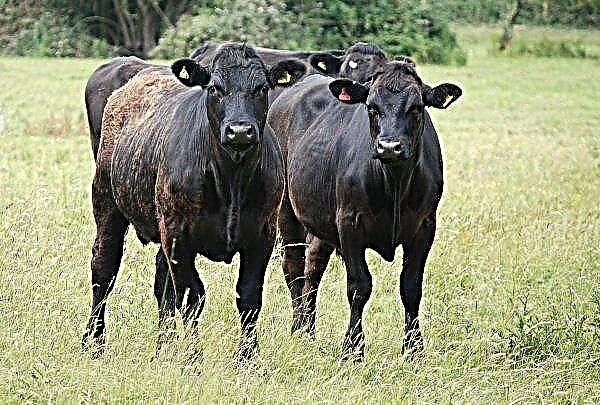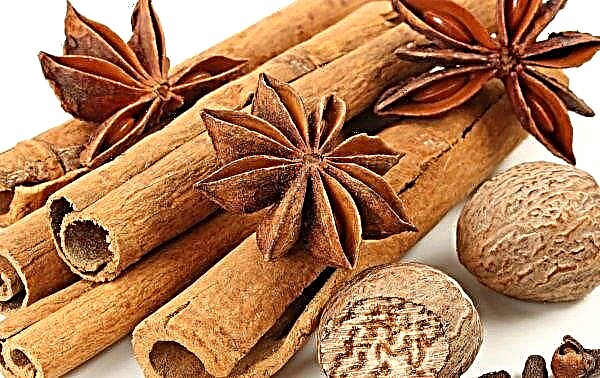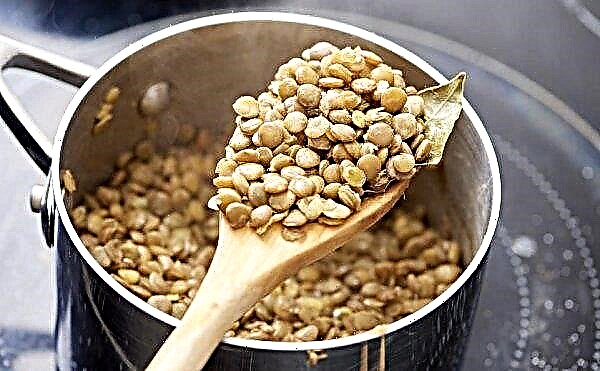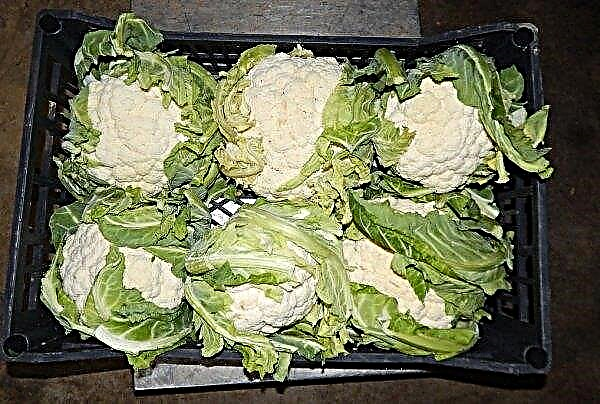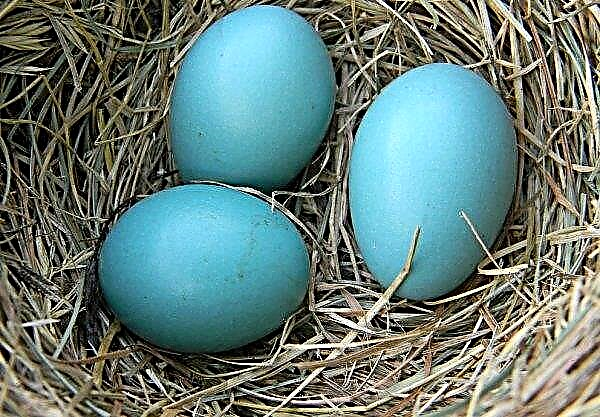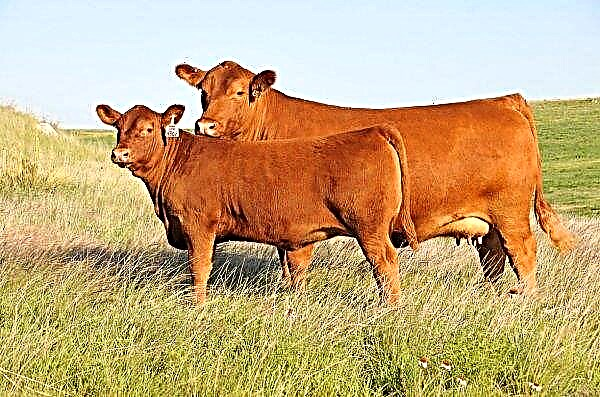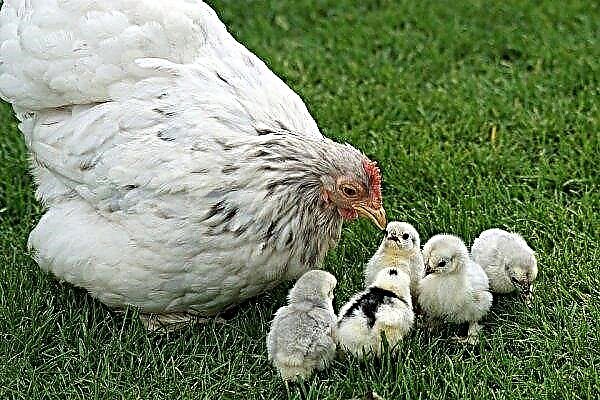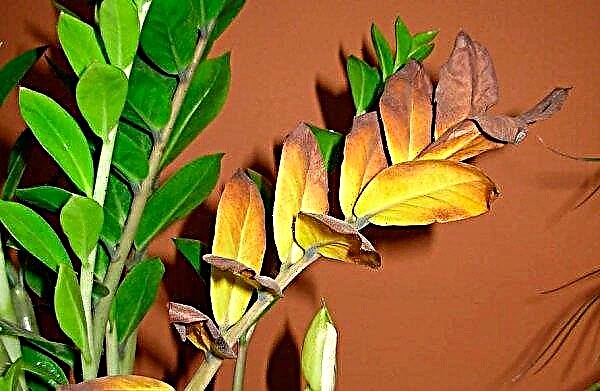Radish Cherriet F1 - a large-fruited early hybrid intended for year-round cultivation. The variety is endowed with excellent commercial properties, so it earned good reviews among gardeners. Read more about the characteristics of this radish, as well as about the features of its cultivation, read in this article.
History and Characteristics
We will first consider the varietal characteristics characteristic of Cherriet F1, as well as get acquainted with its advantages and disadvantages.
Selection
Cherriet F1 - a hybrid of Dutch breeding, bred in the early 2000s. This radish is the result of crossing several varieties, so the hybrid has collected all the best indicators of its predecessors.
Did you know? Radish tops contain much more valuable substances than the root crop itself.
Grade description
The plant forms a semi-upright leaf outlet. The leaf blade is narrow obovate, grayish-green in color. Petioles are painted in intense blue-violet color. Red root crops are characterized by a rounded shape with a convex head.
The pulp of root vegetables is snowy white, tender and juicy. The severity of taste is medium. The average weight of marketable radishes is 28–30 g. Productivity depends on soil composition and weather conditions — 2.5–3 kg of root crops can be harvested from 1 m² of land.
Photo gallery
Advantages and disadvantages
- The main advantages of Cherriet F1 include:
- early ripening dates (18–20 days);
- high yield of approximately the same size and shape of root crops;
- the pulp has no voids even in large root crops;
- the absence of problems such as shooting and flowering;
- not capricious in terms of climate;
- demonstrates resistance to ailments that often affect a given culture;
- does not respond to night and spring frosts;
- the crop withstands transportation over long distances, even in the presence of damage;
- the shelf life in the refrigerator reaches 30 days without noticeable transformations of the original form and taste.
- The presented hybrid has disadvantages, although they are not significant:
- the complexity of processing and feeding;
- due to rapid ripening, the vegetable can accumulate chemicals and harmful compounds.
Did you know? Israeli farmer Nissan Tamir managed to grow a 10 kg radish. This is the largest copy today in the Guinness Book of Records.
Sowing seeds in open ground
Growing Cherriet F1 requires compliance with a number of rules.
The timing
The hybrid is successfully cultivated from mid-March to the end of November. However, such terms are allowed in an appropriate, warm climate. On average, radishes are recommended to start growing in early April. Some farmers practice the winter sowing of this crop.
Seat selection and crop rotation
The culture is very successful in fruiting in areas with light sandy loamy loose soils. In this case, soil acidity should be from 6.5 to 6.8 pH. But it is undesirable to plant a radish on saline soils. It does not tolerate drought and excessively wet soil. Cruciferous crops (mustard, rapeseed, left-handed, rutabaga, cabbage and others) are not allowed as predecessors.
Cruciferous crops (mustard, rapeseed, left-handed, rutabaga, cabbage and others) are not allowed as predecessors.
Important! Sowing radishes after any cruciferous plants is dangerous, because the culture will not be able to develop normally - it will experience a lack of nutrients.
The scheme and depth of crops
Perform the sowing process using the following technology:
- On the plowed bed, form holes up to 2 cm deep. The distance between the rows should be at least 15 cm.
- Generously moisten the wells with water heated in the sun.
- Place the prepared seed in the pits at a distance of about 4 cm from each other.
- Sprinkle the holes with a small layer of earth, but do not tamp.
 After sowing, it is advisable to cover the area with agrofibre or film. Remove cover only when watering. Completely remove the so-called coverlet is allowed a few days after the formation of sprouts.
After sowing, it is advisable to cover the area with agrofibre or film. Remove cover only when watering. Completely remove the so-called coverlet is allowed a few days after the formation of sprouts.Further care
In order to get the maximum possible yield of Cherryt F1 from the sown beds, you must follow the rules for caring for the crop.
Watering
During the entire growing season, sprouts, and then root crops, need sufficient watering with warm water. At the same time, make sure that the water does not stagnate in the garden. Otherwise, the root crops will begin to rot.
Fertilizer application
After 7-10 days after the emergence of seedlings, fertilize the plantings. Spill the aisles with soaked, then diluted with water in a ratio of 1 to 10, chicken droppings.
Important! Fertilizers should be in moderation. If you overfeed the radish, then most of the sowing will go in arrows.
Soil care
In order to maintain soil moisture and for better penetration of air and nutrients to the roots, loosen the topsoil on the bed regularly.
Mulch the soil with dry humus and compost. Mulch allows the earth to keep the soil warm and moist. And before applying the mulch, it is necessary to carefully treat the area from weeds.
Harvesting
Cherriet F1 spets in the shortest possible time - 18 days after the first sprouts, the root crops are ready for harvest. However, do not rush too much with the harvest. The ideal time to harvest is when the fetus reaches an average weight (30 g). In this case, the quality of the crop will be higher.
Be sure to align all mature root crops - cut the tops 2-3 cm from the radish and cut the roots. The vegetable is consumed fresh, it is perfect for light fresh salads and snacks. Sometimes radishes are pickled or canned. As you can see, cultivating Cherriet F1 radishes is not at all difficult. Having spent the minimum amount of money, time and effort, any owner of a summer cottage will be able to get a decent crop of high-quality radish.
As you can see, cultivating Cherriet F1 radishes is not at all difficult. Having spent the minimum amount of money, time and effort, any owner of a summer cottage will be able to get a decent crop of high-quality radish.


